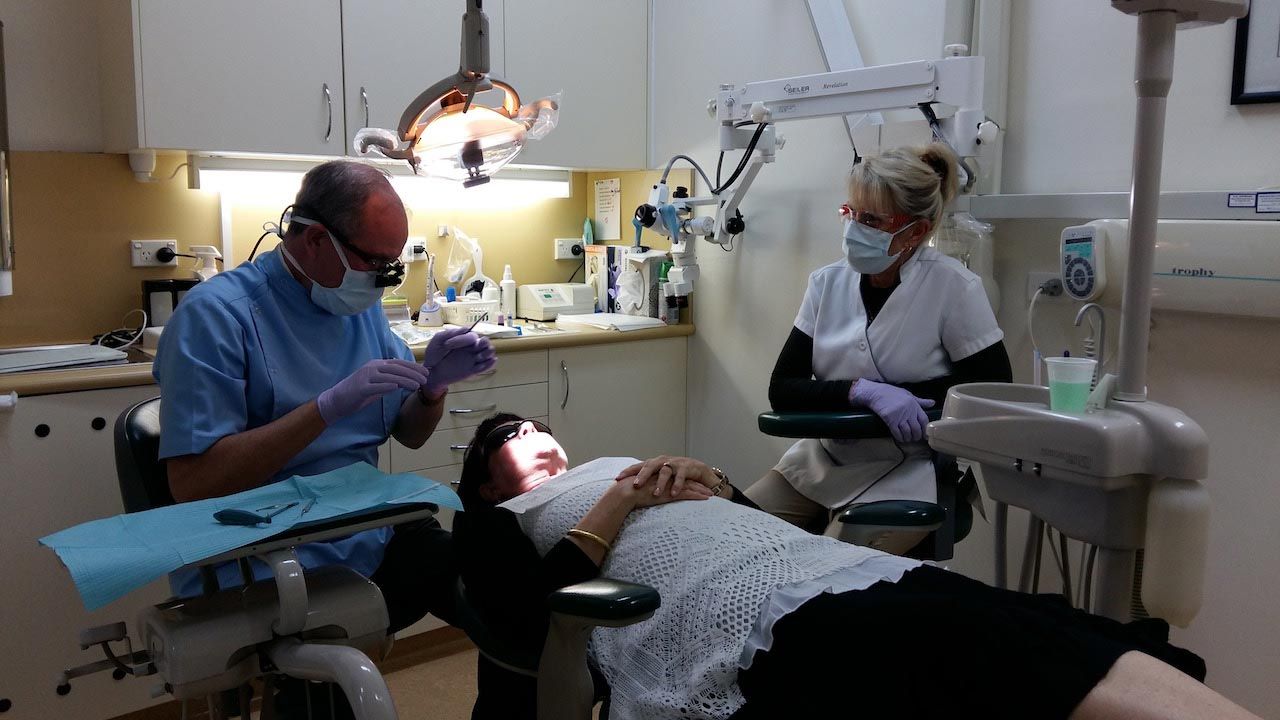When Do You Need A Root Canal & What Are The Symptoms?
Advanced Dental Southern Highlands • November 25, 2025
A dull ache that comes and goes. A sharp twinge when you sip a hot drink. A throbbing tooth that keeps you awake at night. For many people, these are the moments that send them searching for a ‘dental clinic near me’ and wondering if something more serious is going on with a tooth.
Root canal treatment often comes up in these conversations, yet many people are unsure what it actually involves or how to spot the signs that it might be needed. Understanding the symptoms, and what is happening inside the tooth, can make the idea feel less overwhelming and help you decide when to contact a dentist.
Understanding Tooth Pain & Sensitivity
Not all tooth pain points to root canal treatment, but certain patterns of discomfort can suggest that the inner part of the tooth may be affected.
You might notice:
- A toothache that feels deep & hard to pinpoint
- Pain that flares when you chew on one side
- Sensitivity to hot or cold that feels more intense than usual
- Discomfort that lingers long after the trigger is gone
General dentistry services such as check-ups, scale and cleans and dental X-rays give dentists the chance to examine these symptoms carefully, rather than relying on guesswork or online searches.
When Lingering Discomfort May Signal Deeper Damage
Short bursts of sensitivity from cold air or an icy drink can be common. What raises more concern is pain that lingers or returns regularly, even when you are not eating or drinking.
Signs that may suggest a deeper problem include:
- Throbbing pain that keeps you awake or wakes you from sleep
- Discomfort that seems to pulse in time with your heartbeat
- Needing pain relief tablets more often for the same tooth
- A sensation of pressure building around one tooth
At this stage, a dentist may look beyond simple surface issues such as minor enamel wear or a small chip, and consider whether the nerve and soft tissue inside the tooth have become irritated or infected.
Visible Changes Around the Tooth & Gums
Sometimes the tooth itself starts to give visual clues that something is not quite right. These changes can be subtle at first, which is why routine appointments at a dental clinic can be so useful.
You might notice:
- Darkening or greying of a single tooth compared with neighbouring teeth
- Swelling or puffiness in the gum around one tooth
- A small pimple-like spot on the gum that comes and goes
- Tenderness when you press a finger along the gum line
These signs can appear alongside pain, or on their own. General dentistry services such as fillings, gum care and monitoring of problem teeth can help manage early concerns before they progress.
What is a Root Canal Treatment?
A root canal treatment is a way of treating the inside of a tooth when the soft tissue (pulp) has become inflamed or infected. The goal is to save the tooth where possible by cleaning and sealing the root canals, rather than removing the entire tooth.
Broadly, the process usually involves:
- Numbing the tooth & surrounding area with local anaesthetic
- Gently opening the tooth to reach the pulp chamber
- Cleaning & shaping the root canals with fine instruments
- Filling & sealing the canals, then restoring the tooth with a filling or crown
Root canal treatment often sits alongside other general dentistry services such as restorations, crowns and ongoing check-ups to help keep the treated tooth in use.
Why Tooth Pulp Becomes Inflamed or Infected
The pulp inside each tooth contains nerves, blood vessels and connective tissue. When this area is damaged, bacteria can enter and the pulp can become inflamed or infected. This is often what leads to deep, lingering tooth pain.
Common causes include:
- Untreated tooth decay that reaches the inner layers of the tooth
- A cracked or chipped tooth from biting, grinding or injury
- A heavy knock to a tooth, even if there is no obvious chip
- Repeated dental work on the same tooth over time
Sometimes the pulp can die off quietly after an injury, and symptoms only show up later through discolouration, swelling or changes seen on an X-ray.
How a Dentist Works Out if a Root Canal is Needed
Because tooth pain can have many causes, a careful examination is important before deciding if a root canal is appropriate. Dentists rely on a mix of your description of symptoms, clinical checks and diagnostic tools.
Assessment may include:
- Asking when the pain started, how long it lasts & what triggers it
- Gently tapping or pressing on the tooth to check for tenderness
- Thermal tests to see how the tooth reacts to hot or cold
- Dental X-rays to look at the roots, surrounding bone & any decay
Depending on what they find, a dentist may recommend options such as a filling, crown, root canal treatment or, in some cases, extraction. General dentistry services also allow for follow-up appointments, so the tooth can be monitored over time.
What Happens During Root Canal Treatment
Many people feel anxious about root canal treatment, often due to stories they have heard in the past. In reality, modern techniques and local anaesthetic are used to keep patients as comfortable as possible throughout the appointment.
A typical root canal appointment may involve:
- Numbing the area so you should feel pressure but not sharp pain
- Placing a small rubber sheet around the tooth to keep it dry
- Cleaning out the inflamed or infected pulp from the canals
- Placing a temporary or permanent filling between visits
Some root canal treatments are completed over several appointments, particularly if the tooth has complex roots or there has been significant infection. Once the canals are filled and sealed, a
crown or other restoration may be recommended to support the tooth.
Caring for Your Tooth After Treatment
Looking after a tooth that has had root canal treatment is similar to caring for your other teeth, although there may be a short period of tenderness as the area settles. Good home care and regular dental visits can help the tooth function well for many years.
After treatment, your dentist may suggest:
- Taking care when chewing on the tooth until a final crown or filling is placed
- Brushing twice daily with fluoride toothpaste
- Cleaning between the teeth with floss or interdental brushes
- Attending regular check-ups & cleans to keep an eye on the treated tooth
If you notice new swelling, pain that returns or changes around the tooth after treatment, it is important to contact your dental clinic so they can reassess the area.
When to Contact a Dentist About Tooth Pain
It can be tempting to wait and see if a tooth settles on its own, but ongoing pain or swelling is a sign that something needs attention. Early assessment may give you more options and can reduce the chance of sudden flare-ups.
Consider contacting a dentist if you notice:
- Persistent toothache that lasts more than a day or two
- Sensitivity that lingers long after hot or cold contact
- Swelling of the face or gum near a particular tooth
- A bad taste in the mouth that does not seem to go away
If you find yourself searching for a ‘dental clinic near me’ because of tooth pain, it may be time to book an appointment and discuss what is happening. A dentist can explain whether a root canal, another treatment or further monitoring is appropriate in your situation.
Get in Touch
At Advanced Dental Southern Highlands, we understand that ongoing tooth pain can impact work, family life and everyday routines, especially for people juggling busy days in and around Moss Vale. If you are wondering whether your symptoms point to root canal treatment, or you simply want a clear explanation of what is happening with a tooth, you can contact us or book online.
As a dental clinic Moss Vale residents can turn to for general dentistry care, we can talk through your concerns, examine the tooth and outline the options available so you can decide on the next step that feels right for you.




